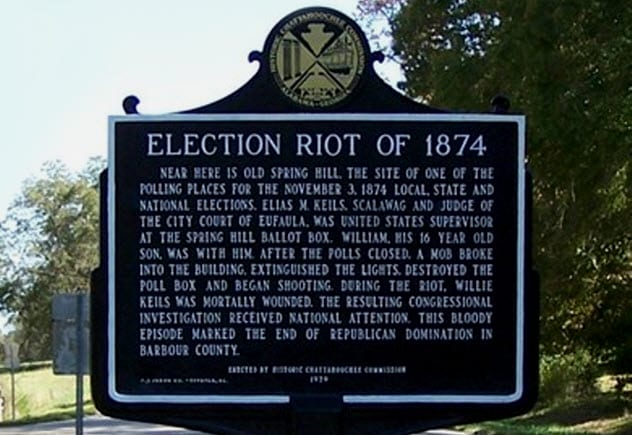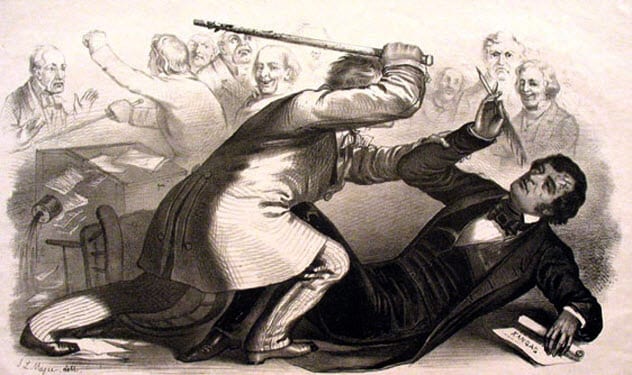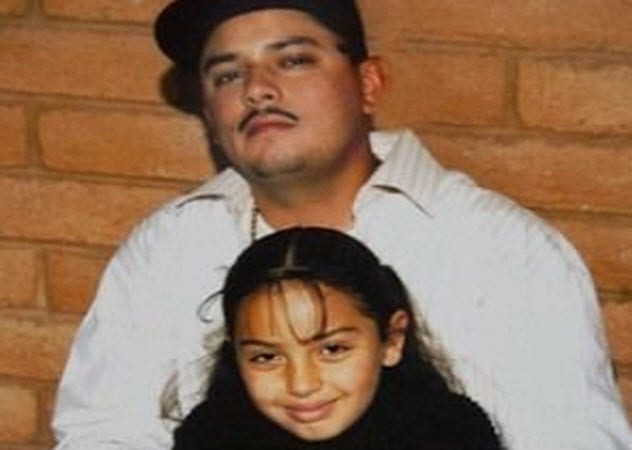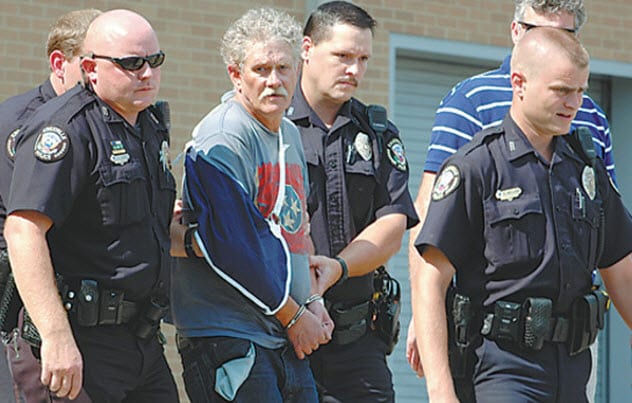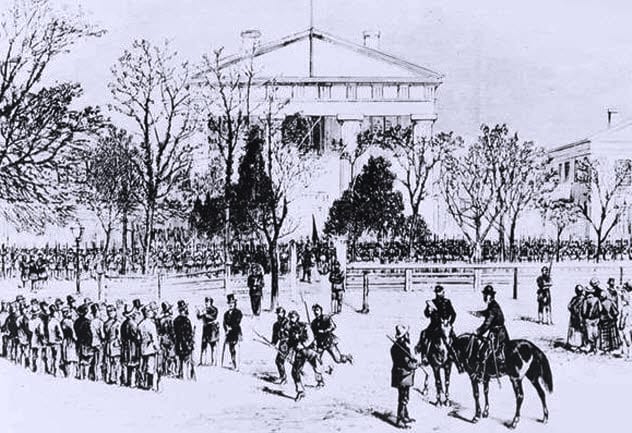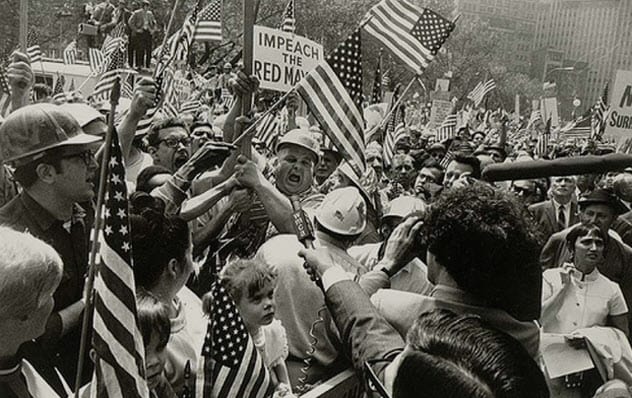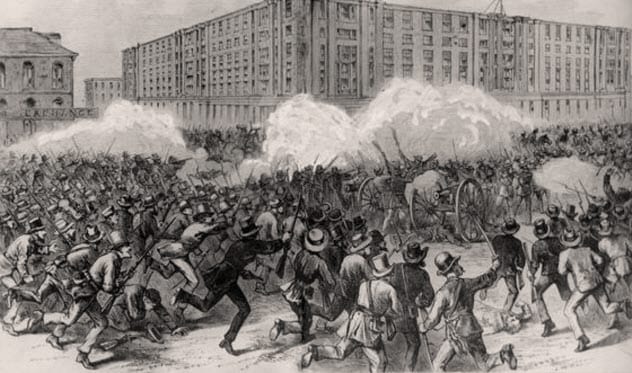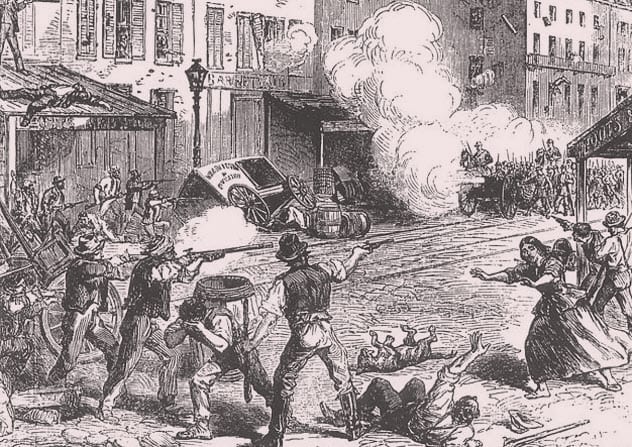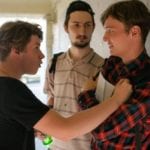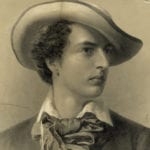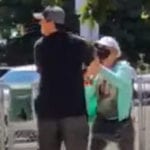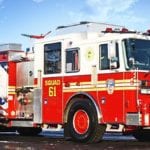A few studies, polls, and personal accounts in the media suggest otherwise. Maybe the differences between most liberals and conservatives aren’t really that stark. Maybe some in the media sensationalize their news stories to raise their ratings and persuade people to come to their political side when simply reporting all the facts in an unbiased manner won’t do the job. Either way, unrest is also being fueled by two US political parties battling for power in the worst possible ways. Whether deliberate or not, they may be motivating crazies on both sides to take extreme actions that no sane person wants to see. As the United States appears to become more politically charged and divided, it’s more important than ever to recognize the threat posed by politically motivated violence. Here are 10 terrible acts of US political violence that occurred throughout the country’s history.
10 Congressional Baseball Practice Shooting
On June 14, 2017, the shooting at a Congressional baseball practice was just another example in the unfortunate history of US political violence. James Hodgkinson opened fire on the Republican members of the Congressional baseball team as they practiced. For about 10 minutes, shots were continuously fired, with some estimating the number at 50–100. Several people were shot, but only the gunman died during a gunfight with police. Based on his social media posts, Hodgkinson has been stridently anti-Republican. (He also volunteered for the presidential campaign of Bernie Sanders.) When asked about the shooting, Senator Jeff Flake responded: “People know this is the Republican baseball team practicing. You can tell.”[1] Representative Jeff Duncan remembered encountering Hodgkinson in the parking lot before the attack. The gunman had asked if the Democrats or Republicans were practicing. Duncan said, “I told him they were Republicans.”
9 The Election Riot Of 1874
The date: November 3, 1874. The place: Barbour County, Alabama. Republicans had dominated the area since the end of the Civil War, thanks to newly freed black voters along with alleged out-of-state voters. The White League, a paramilitary group set up to promote white men and Democrats, came to the town of Eufaula, hoping to intimidate or otherwise persuade Republican voters to abstain from voting. Instead, a riot occurred in which eight men were killed and as many as 80 were wounded, most of them black.[2] The White League then moved on to Spring Hill, a nearby town, where they stormed the polling place, destroyed the ballet box, and killed the son of E.M. Keils, a Republican judge. In the end, Democrats gained control of the vote counting. They refused to acknowledge any Republican votes and put their own leaders in charge. The legacy of these actions was to keep Republican voters from joining in the political process through implied or actual violence for decades.
8 The Caning Of Charles Sumner
On May 22, 1856, one of the most infamous events in the history of the US Senate occurred: the caning of Senator Charles Sumner by Representative Preston Brooks. Sumner was a strident abolitionist. He had given a damning speech a few days earlier that featured a number of attacks on Democratic senators, including Stephen Douglas and Andrew Butler. Brooks, who was Butler’s cousin, took extreme offense at the remarks and decided that something had to be done about it. Brooks’s plan was to attack Sumner with a cane because he thought Sumner wasn’t a gentleman and wouldn’t agree to an honorable duel. (Apparently, Brooks failed to see the irony in that.) After the Senate had adjourned for the day, Brooks sneaked up behind Sumner and began to beat him with a cane for about a minute. Brooks faced little punishment for his actions, only being fined about $8,000 in today’s money. Sumner suffered immensely from his injuries, taking three years to recover well enough to come back to the Senate. However, he endured lingering effects for the remainder of his life.[3]
7 The Murders Of Raul and Brisenia Flores
Raul Flores Jr., his wife, Gina Gonzales, and their daughter, Brisenia Flores, were sitting in their home in Arivaca, Arizona, on May 30, 2009, when three people burst through the door claiming to be law enforcement officers. However, they were really members of a fledgling anti–illegal immigration group known as the Minutemen American Defense (MAD). Shawna Forde, the ringleader of the attack, had previously been in the Minutemen Civil Defense Corps, another vigilante anti–illegal immigration group. Forde and her two accomplices believed that there were drugs and ill-gotten money in the Flores household. So they decided to rob and murder the inhabitants to fund MAD. However, there was nothing illegal in the house. Forde decided to kill all three anyway.[4] Flores Jr. was shot in the chest, and Gonzales was shot in the leg. However, she survived the attack by pretending to be dead. Brisenia, a nine-year-old, was shot at point-blank range in the face after unsuccessfully pleading for her life. Forde and one of her accomplices were sentenced to death. The other perpetrator was sentenced to life in prison.
6 Knoxville Unitarian Universalist Church Shooting
Jim David Adkisson was a former private in the US Army who had served from 1974 to 1977. He was also staunchly anti-liberalism, blaming Democrats, liberals, blacks, and homosexuals for America’s problems. Frustrated with his inability to personally attack elected Democrats, he decided to target those he felt had voted them into office. The victims of his rage: members of the Tennessee Valley Unitarian Universalist Church. (He believed their teachings were too liberal.) On July 27, 2008, while the congregation was watching a children’s musical performance, Adkisson walked into the sanctuary and began firing a shotgun into the crowd. Two people died before church members were able to wrestle the gun away from him. They restrained him until the police arrived.[5] Adkisson had intended to keep firing until police shot him to death. Less than a year later, he pleaded guilty to two counts of murder and was sentenced to life in prison.
5 The Brooks–Baxter War
Precipitated by questions about the legitimacy of the 1872 gubernatorial election in Arkansas, the Brooks–Baxter War was fought between supporters of two rivals: Joseph Brooks and Elisha Baxter. Claims of disregarded ballots and of votes from the dead were rampant. Brooks was announced as the winner first, although Baxter was soon declared victorious. Conflict no doubt arose because the Election Commission was dominated by members of Baxter’s party, as was the state legislature. In the end, Baxter was sworn in as governor. A number of legal battles ensued, though each was ultimately unsuccessful for Brooks. However, a judge was finally found who would rule in Brooks’s favor. Even though he wasn’t legally allowed to do so, Judge John Whytock swore Brooks in as governor. With the writ as well as about 20 armed men, Brooks marched on the Arkansas Capitol building and proceeded to drag Baxter out of his office. Eventually, thousands of people joined in the fighting. Modern estimates put the death toll at a little more than 200 people. President Ulysses S. Grant was forced to step in and declare Baxter the legal governor, at which point Brooks relented.[6]
4 The Hard Hat Riot
The Vietnam era in the US featured a plethora of anti-war protests, some violent and others nonviolent. One with a bloody end was the Hard Hat Riot in New York City on May 8, 1970. During the previous month, President Richard Nixon had announced plans for an invasion of Cambodia. In addition, four Kent State University students had been shot to death by the Ohio National Guard just four days earlier. So, it’s no exaggeration to say that the tension in the air was palpable. Thousands of anti-war protesters flooded Wall Street, demanding the release of “all political prisoners in America.”[7] For whatever reason, possibly the tendency for working-class whites to be conservative, about 200 construction workers waded into the horde and began assaulting the protesters. The workers specifically looked for men with long hair as they were deemed to be less masculine. Construction workers also rushed the American flag at City Hall, angered that it was flying at half-mast to honor the students who had died at Kent State.
3 The Coushatta Massacre
It was August 1874 in Louisiana, and the White League was intent on driving Republicans out of the state and murdering any black people they could find. They amassed a relatively large militia and marched on the town of Coushatta, where they planned to kidnap six white Republican officials. The White League claimed that they were actually arresting the officials for planning a “Negro rebellion.”[8] Of course, those claims were false. Frank Edgerton, the sheriff of the parish, organized his own posse to resist the White League. Unfortunately, the posse was summarily defeated. Although the six officials agreed to resign with the promise that their lives would be spared, they were instead taken just outside the parish line and executed. (Four black men were also killed in the massacre.) Headlines across the nation trumpeted the fact that the perpetrators had gone unpunished. In fact, there wasn’t even an investigation into the attack.
2 The New York City Draft Riots
Known at the time as Draft Week, the New York City draft riots broke out due to stricter federal draft laws from the increasing bloodiness of the US Civil War. On Saturday, July 11, 1863, the first lottery took place to determine who would be conscripted into the Union Army. At first, everything seemed to be fine as Sunday came and went without incident. However, early Monday morning, rioting broke out. The crowd targeted government and military buildings. Many of the rioters were working-class Irishmen who were angered that the wealthy could pay $300 to get their names removed from the list. However, their ire quickly turned to the black residents of the city as they were scapegoated for the problems as well. (Whites who were seen as supporters of the black citizens were also attacked.) Eventually, policemen and soldiers arrived in large enough numbers to disperse the rioters. However, a number of black people had already been killed and “black-friendly” buildings had been destroyed.[9]
1 The Pineapple Primary
Perhaps the most violent US election of all time, the 1928 Republican primary in Chicago was characterized by the use of an incredibly large number of explosives, especially hand grenades colloquially known as “pineapples.” In fact, in the six months leading up to the election, 62 separate bombings took place, with at least two politicians dying in the violence. Corrupt politicians with ties to organized crime—as well as the lucrative bootlegging which had consumed the city—were the primary reasons for the violence. Led by the infamous Al Capone, the savage mob was also accused of ballot box stuffing and voter intimidation. However, Capone knew it wouldn’t work in a national election. When he was asked by Frank Loesch, the founder of the Chicago Crime Commission, to allow a peaceful election, the mob boss agreed to abstain from violence. Loesch later said of the day: “It turned out to be the squarest and the most successful election day in 40 years.”[10]

